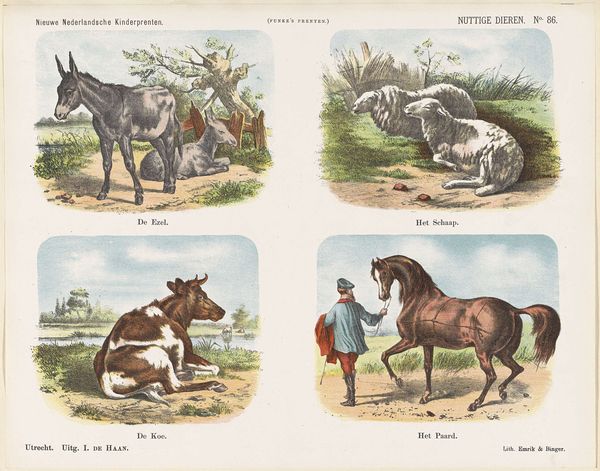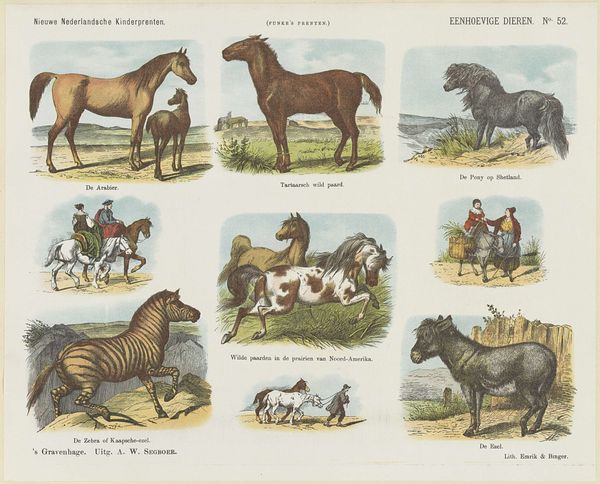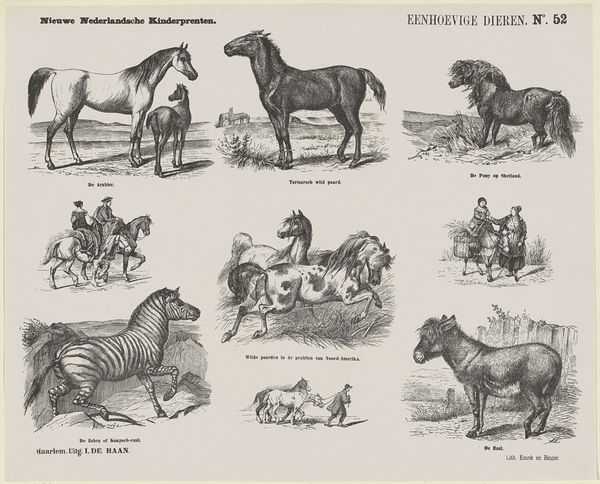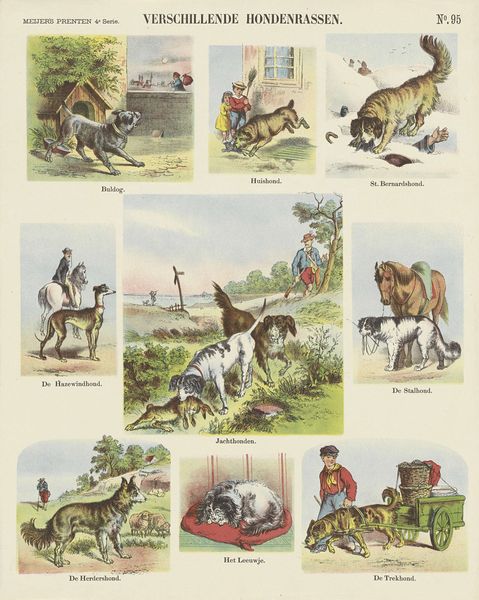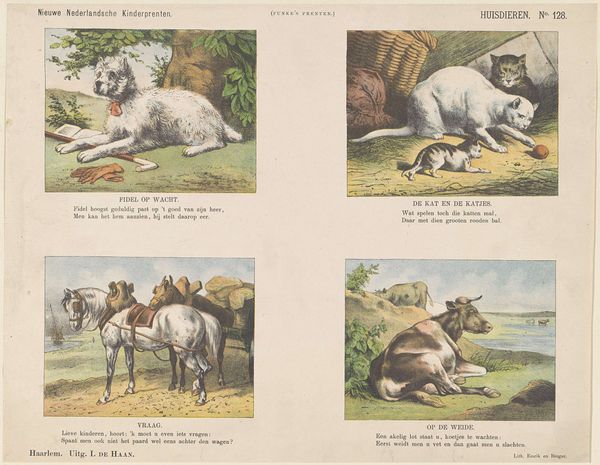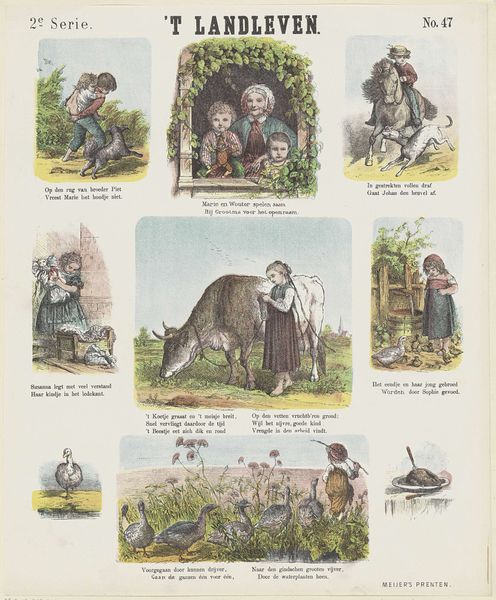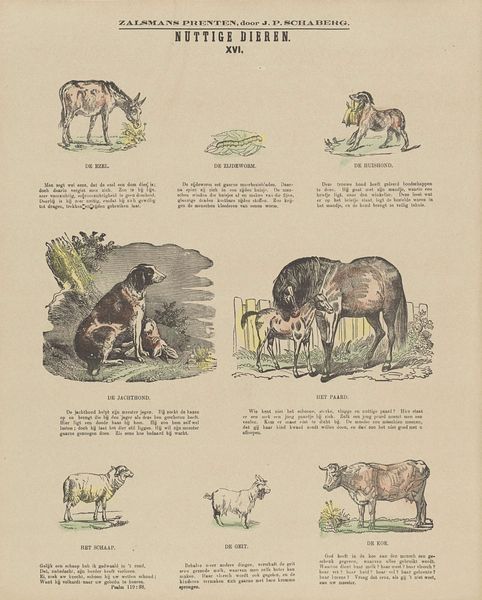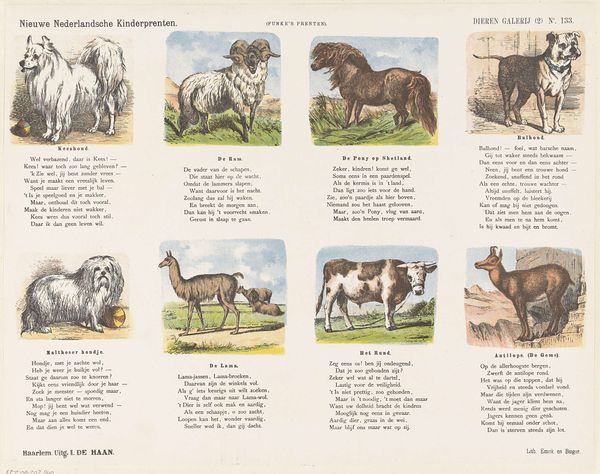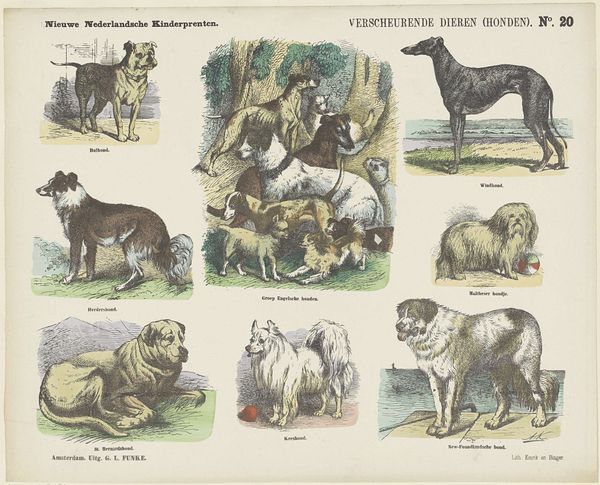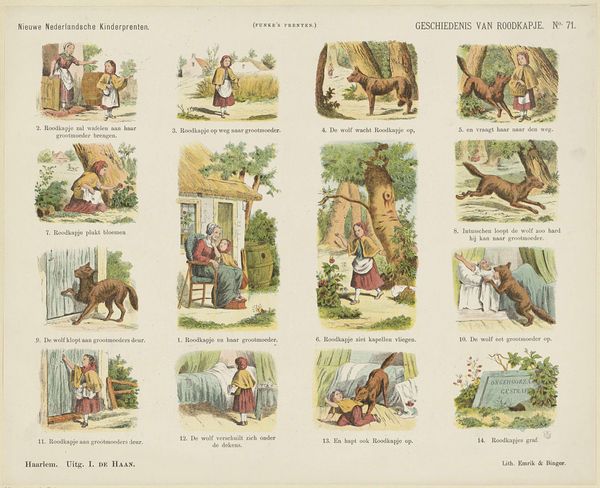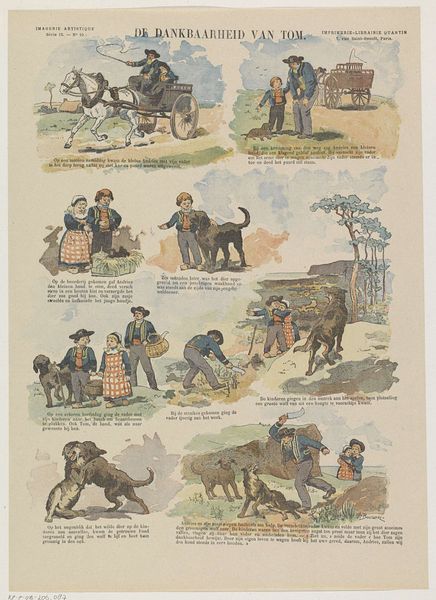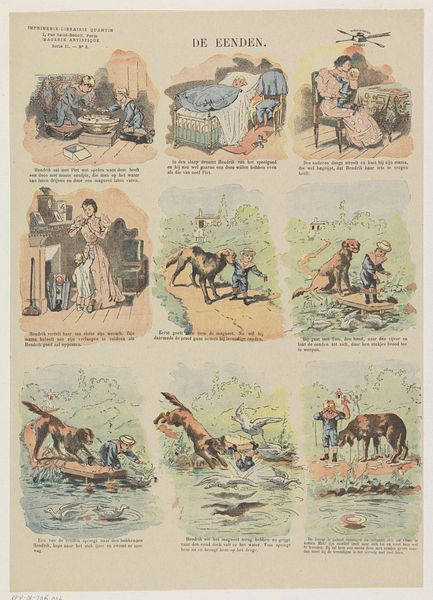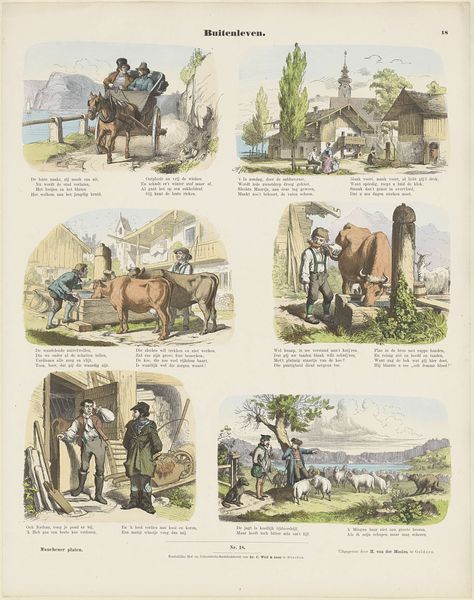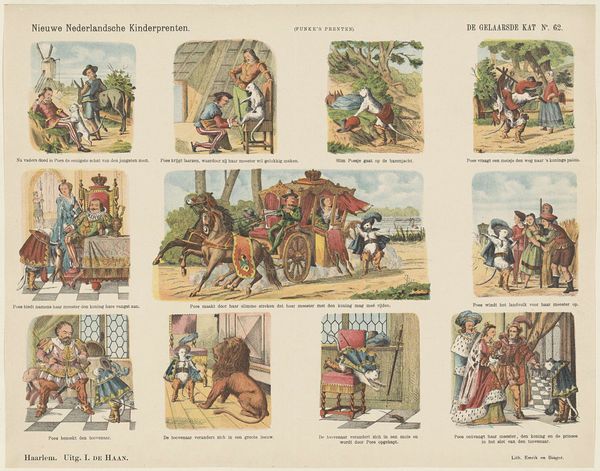
print, watercolor
# print
#
watercolor
#
coloured pencil
#
genre-painting
Dimensions: height 345 mm, width 427 mm
Copyright: Rijks Museum: Open Domain
Curator: Immediately I see a bygone era, a kind of rural tranquility evoked by these gentle depictions of farm animals. It’s quite charming. Editor: "Nuttige Dieren," or "Useful Animals," made sometime between 1875 and 1903 by Jan de Haan. It's a print enhanced with watercolor, showcasing, in separate vignettes, the donkey, the sheep, the cow, and the horse. At first glance, I am struck by how gendered this is, in the sense of labor that is historically coded as masculine—humans using animals to dominate the natural world, which is so often conceived as feminine. Curator: Fascinating perspective! I tend to fixate on the enduring appeal of these creatures across cultures. Consider, for instance, how the donkey, often relegated to a symbol of stubbornness, here assumes a role as a foundational working animal. In ancient mythologies and agrarian societies, it represented labor and patience. Editor: But wasn't that very symbolism used to justify exploitative practices? Even now, that persistent trope of "stubbornness" pathologizes the animal’s natural resistance, normalizing their abuse within these human-animal dynamics. The art perpetuates a hierarchy. Curator: That’s undeniable, of course. But looking at how these "useful animals" are framed—take the tranquil sheep in a pasture—there's an attempt to find harmony, to demonstrate respect for their existence even while acknowledging their role. The symbolic intent seems less about pure subjugation. Editor: Perhaps. But the serene composition idealizes farm life and obscures the messy realities: the backbreaking labor, the ethical issues inherent in animal agriculture. This imagery served to romanticize a relationship that's deeply implicated in broader socio-economic structures, effectively eliding the exploitation involved. This “usefulness” is entirely defined by human needs, at the animals' expense. Curator: I see what you mean; it's a pastoral narrative carefully curated, isn’t it? A softened lens applied to a far more complicated relationship. This artwork shows us just as much of our past as it omits. Editor: Yes. It reminds us to question these seemingly simple depictions. Whose stories are being told, and at whose expense? It allows us to ask those critical questions, challenging the ways we visualize—and enact—power dynamics even today.
Comments
No comments
Be the first to comment and join the conversation on the ultimate creative platform.
